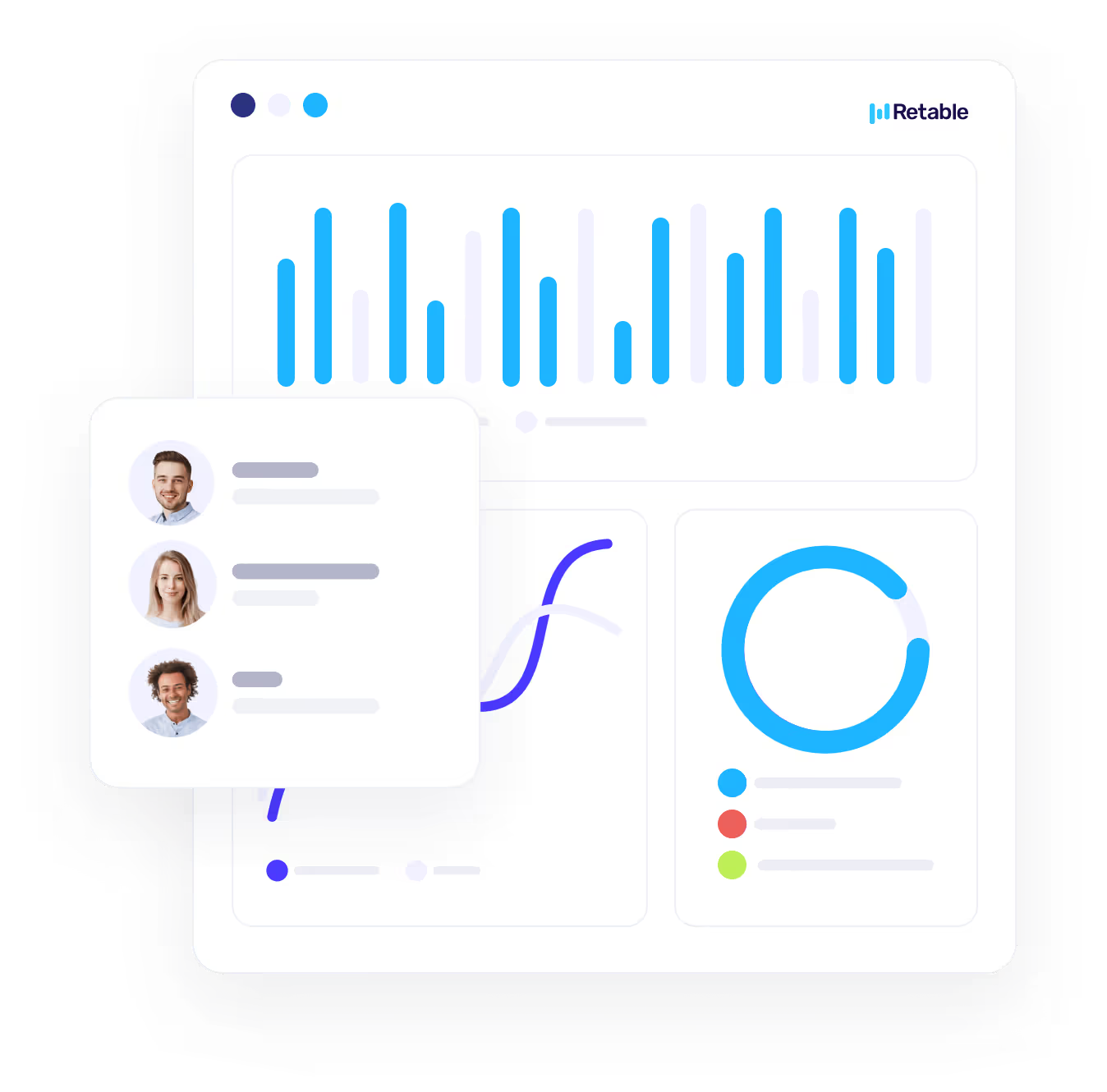Mastering Retable: Understanding the database structure
Retable offers a robust and user-friendly platform that combines the flexibility of databases with the simplicity of spreadsheets, making data management intuitive and efficient for businesses. Let's explore the back-bones of Retable together!
In today’s data-driven world, having a robust and user-friendly data management system is crucial for businesses. Retable offers a powerful platform that combines the flexibility of databases with the simplicity of spreadsheets, making data management a breeze.🌟
Table of contents
- What is Retable?
- The dashboard: Your central hub
- Workspaces: Organize your projects
- Projects: Detailed organization for your tasks
- Tables: The backbone of your data
- Views: Visualize your data tables
- Conclusion
What is Retable?
Retable is a modern online spreadsheet tool designed to empower users to organize, analyze, and visualize their data more intuitively. It’s more than just a spreadsheet; it’s a powerful platform that allows you to create everything from simple lists to complex workflows.
The dashboard: Your central hub
Your Retable dashboard is the central hub where all your Retable adventures begin! It's your go-to place for accessing and managing workspaces, projects, and data. Think of it as your digital command center, keeping everything organized and within reach. 🎛️

When you log in to Retable, you’ll land on your dashboard. Here’s what you’ll find:
- Workspaces and projects: Easily access your workspaces and projects.
- Helpful resources: Find various resources from the menu in the header.
- Account settings: Located at the upper right corner, where you can manage your user settings.
The dashboard is designed to make navigating through your tasks a breeze. 🚀
Workspaces: Your collaborative command center
Workspaces are like digital rooms where you and your team can collaborate on related projects. Imagine having separate folders for different departments or specific tasks. This way, everything stays organized and easy to manage. 🗂️

In your dashboard, you’ll find that Retable has already generated a default workspace with sample projects. Use these examples to inspire your own workspace creations. Whether organizing by department or project type, workspaces keep your data neat and tidy. 🌐
To create a new workspace:
- Click on the “+Add Workspace” button.
- Assign a name and provide a brief description for easy identification.
- Create your first project within this workspace.
- Share the workspace with your team and set permissions.
Projects: Focused and organized
Inside your workspaces, you'll find projects—the heart of your detailed organization. Projects allow you to focus on specific tasks or objectives, housing multiple tables and views. 📈
.avif)
To create a new project:
- From the dashboard, select the “Add Project” option within your workspace.
- Choose how to start your project:some text
- Start from scratch: Create a blank project with custom tables and views.
- Import document: Import a CSV, XLS, or Retable file.
- Start with a template: Select and customize a template.
- Name your project and provide a brief description.
- Share the project with your team and set permissions.
Projects help you stay organized and productive, providing all the tools you need to track progress and manage data effectively. 🏗️
Tables: The backbone of your data
Tables in Retable are more than just rows and columns. They’re dynamic canvases for all your data needs. Customize them with different field types to suit your data, whether it's text, numbers, dates, or attachments. You can have multiple tables within a single project. 🔄

To create a table:
- Within a project, use the tab panel to initiate a new table.
- Name your table to reflect its content or purpose.
- Organize columns based on the data types you need.
Tables make data management user-friendly and effective, bridging the gap between traditional spreadsheets and modern data solutions. 🧩
Views: Visualize your data tables
Retable offers various views to help you visualize and interact with your data. Each view provides a unique perspective:

- Grid View: The default view, similar to a traditional spreadsheet.
- Calendar View: Ideal for projects with date parameters, showing events and tasks in a timeline.
- Card View: Great for visual data like images or graphics.
- Kanban View: Perfect for tracking workflows and task progress.
- Form View: Turns your table into an interactive online form for data collection.
Switching between views is seamless, letting you analyze your data from multiple angles. It’s like having a set of tailored lenses for all your data visualization needs. 🔍
Conclusion
Mastering the basics of Retable transforms data management from a chore into a breeze. With dashboards, workspaces, projects, and tables, you’re equipped to handle any data challenge. By understanding and utilizing these core components, you can make the most of Retable's powerful features and improve your business processes. 🌟
To get the most out of Retable, you can start using it for free today and check out the Retable Academy to access more helpful resources!
more
Related Resources
Create your smart data management solution
Plan, track, and analyse with your ease. Transform your data with an all-in-one platform, collaborate with your teammates.
Try for free!
.avif)

.avif)
.avif)
.avif)